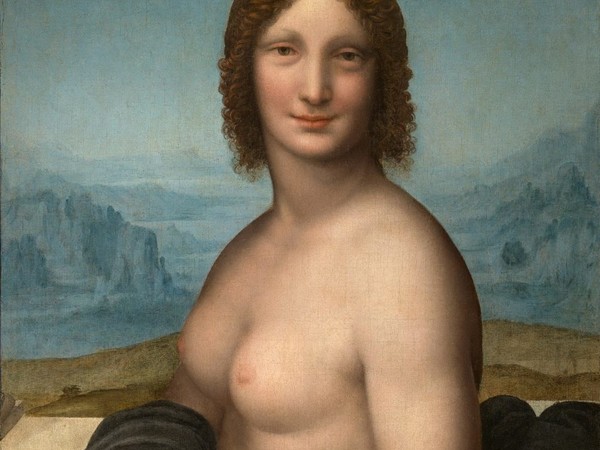The “Leonardo vive” kaleidoscope exhibition inaugurated on May 2nd, 2019, in Museo Ideale Leonardo Da Vinci in Vinci (Florence), Tuscany, Italy

Vinci (Florence), 2 May 2019 – On the exact day of the fifth centenary of the death of Leonardo Da Vinci, his hometown is the scene of important innovations that will make it possible to make progress towards the knowledge of the great universal genius: it is the inauguration of two museums with the exhibition “Leonardo vive”, which presents unpublished revelations and documents exposed for the first time, curated by Alessandro Vezzosi and Agnese Sabato.
EXHIBITION OF TWO HISTORICALLY DEFINED RELAYS OF LEONARDO
A lock of hair historically defined as “les cheveux de Leonardo da Vinci” and a ring from the same collection came from the one who found the remains of Leonardo among the ruins of the castle of Amboise, were presented on 2 May, 2019, world debut, in the Museo Ideale Leonardo da Vinci.
“The story of the precious relic – explained Alessandro Vezzosi, director of the Da Vinci Museum – began in 1863 when Arsène Houssaye, writer and inspector general of French provincial museums, a friend of Delacroix and Baudelaire, was commissioned by an imperial commission of look for Leonardo’s tomb among the ruins of the castle of Amboise, where Leonardo had been buried on 12 August 1519.
He found the remains of those he identified as the bones and skull of the artist-scientist, thanks also to some stone fragments of an inscription attributable to the name of “Leonardus Vinci”. Then its were recomposed in the tomb of the Chapel of Saint Hubert of the Royal Castle of Amboise.
The documents now exposed to Vinci attest that Houssaye retained two relics for himself. In fact, in 1925, Harold K. Shigley, a cultured and passionate American collector of memorabilia, bought in Paris from Houssaye’s great-grandson, “a lock of Leonardo’s hair and a bronze ring found on Da Vinci’s finger”. In 1985 these two finds passed into the hands of another American collector who, in 2016, having heard about our research on Leonardo’s genealogy, contacted us. After three years of work, we were able to bring these findings back to Italy, which we can finally show in the Vinci Ideal Museum. The relic of the hair is not only a historical document, nor a simple heirloom, but an extraordinary instrument of knowledge ».
The “Leonardo Vivi” exhibition was conceived as a kaleidoscope, not only to exemplify Leonardo’s current relevance in contemporary art and culture, but also to present the results of genealogical research through twenty generations up to the present and to DNA. The exhibition is divided into five parts. The first (Leonardo Heritage) presents archive documents and artifacts from genealogical studies: from the relics of the hair to the documents related to the father Ser Piero, to the less and less mysterious mother Caterina, to the grandfather Antonio, who was also a merchant in North Africa. The second concerns Leonardo’s workshop: the nude Gioconda, and also the Santa Caterina in the torture machine of a pupil of Leonardo (Giampietrino) who presents fingerprints and palm-sized ones. The third (Leonardo and the Renaissance of wine) explores Leonardo’s relations with the territory and with agriculture, which played an important role in his biography and in the many studies of nature, oenology and rural technology, as well as in literary writings and from the Etruscans to the Medici, from the circle of Desiderio da Settignano to Guido Reni. The fourth one (Leonardism through the centuries) proceeds from the folders of the Nodes in Geneva xylographed by Albrecht Dürer at the beginning of the sixteenth century, continues between the image of Leonardo and ancient engravings of après, reaches the theft of 1911 and the Gioconda L.H.O.O.Q. by Duchamp, up to Dalì, Beuys, Warhol and other protagonists of the new international avant-garde.
For the current affairs of Leonardo among the representative works of contemporary artists from different countries, we note in particular the Dialogue with the Landscape by Leonardo of 1473 by the Chinese painter Xu Li who had come specially from Beijing.
Patronages of the Event were National Commission for the five hundredth anniversary of Leonardo’s death; Tuscany region. Collaborators: Municipality of Vinci, Propositura of Santa Croce, State Archives of Florence, State Archives of Prato, National Archaeological Museum of Florence, International Ceramics Museum of Faenza.
LA GIOCONDA NUDA: HOW IT WAS BORN. 18 DAYS TO ENJOY IT IN VINCI
David A. Brown and Konrad Oberhuber, in 1978, defined the iconography of the nude Gioconda “the last great pictorial invention of Leonardo”.
From today until May 19 and then again from next October, the nude Gioconda is exhibited in the Museo Ideale Leonardo Da Vinci, with a series of historical, artistic and scientific innovations.
Today, the results of new research that led to a sensational discovery are presented. “Our scientific examinations – explained Maurizio Seracini of Editech – have shown that in this painting there are the dots for the carry-out corresponding exactly to those of the Carton of the Condè Museum of Chantilly, now attributed to Leonardo himself and his atelier”.
From June 1 the Gioconda Nuda of the Museo Ideale (Italy) will be exhibited right in the Condé Museum (France) next to the design that gave it origin, along with another famous and prestigious version: that of the Museum of Hermitage of St. Petersburg, formerly attributed to Leonardo and now predominantly to Salai.
This version of the Museo Ideale had also in the past been called “Portrait of a naked woman by Leonardo da Vinci”.
Recently it has been exhibited from Miami to Tokyo (as a work attributed to the favorite student Salai, based on the master’s ideation, datable to the years 1513-1517). Recent investigations open further study perspectives.


Leave a Reply